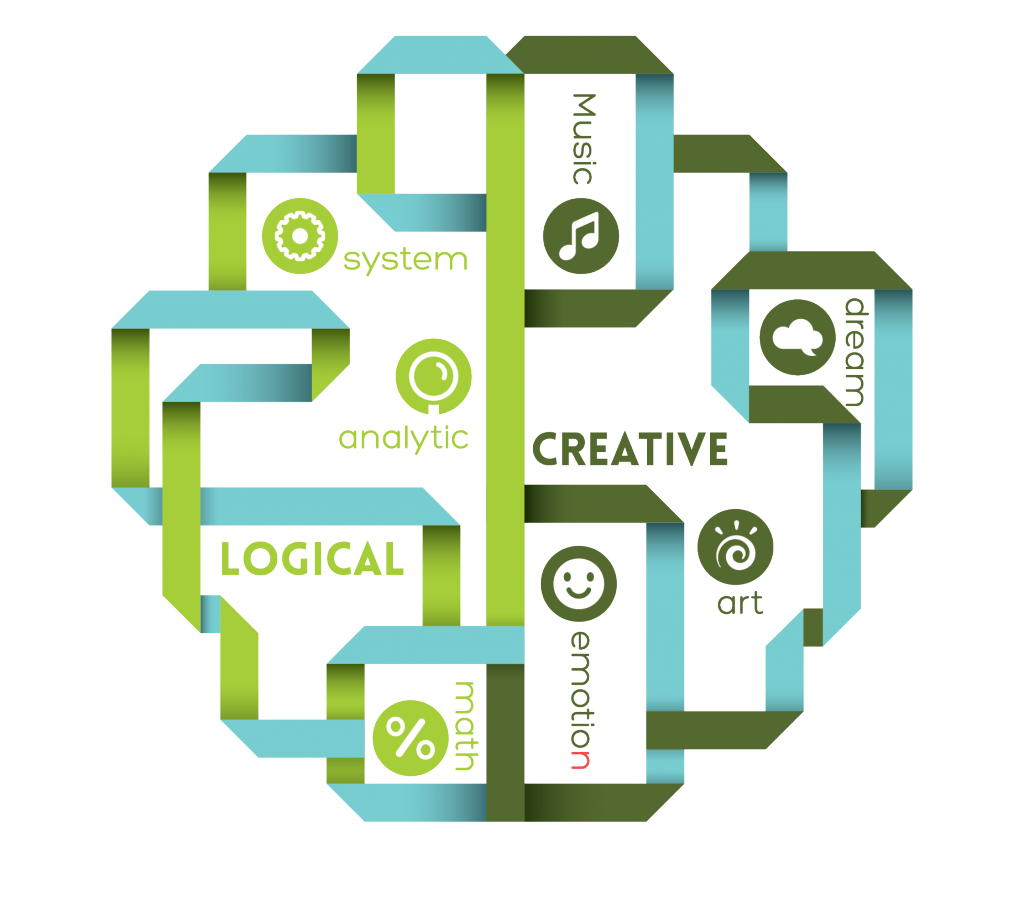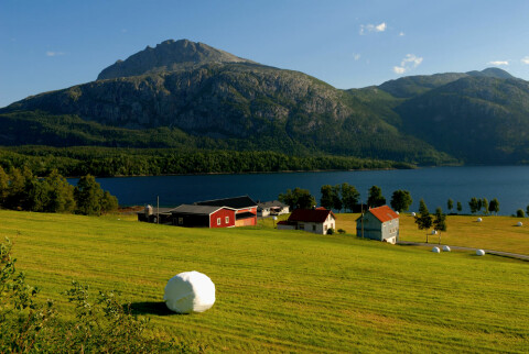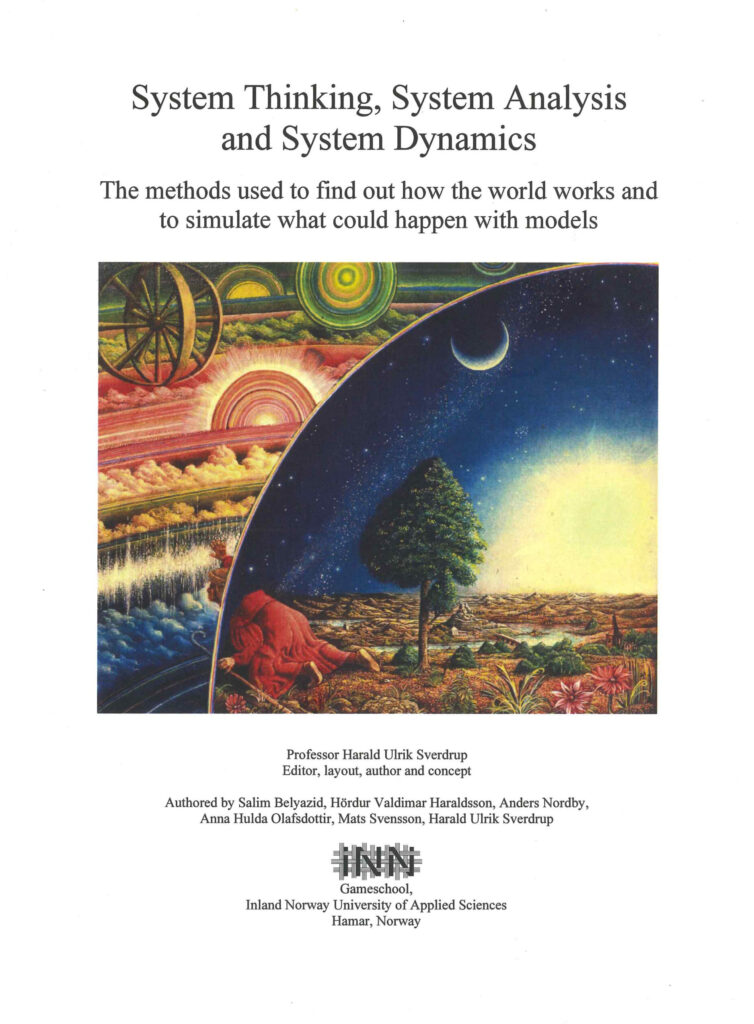Research & Development
The Faculty of Audiovisual Media and Creative Technologies include two institutes; the Game School and the TV School. The faculty has a wide variety of activities and projects within research and development (R&D) and artistic development (AD). The activities span from strict disciplinary research within the humanities to artistic production and technological innovation. The core of the activities related to R&D and AD can be summed up as the development, application and analysis of media products and technological systems.
A brief inventory of topics covered by the R&D and AD activities at the faculty illustrates both its broad scope as well as the centrality of the core concepts; development, application and analysis:
- Animation, digital art, documentary filmmaking, and TV formats
- Media industries and production studies, the aesthetics of games, the art of storytelling, film and television history
- Serious games, gamification, system design, and audience studies

Harald Ulrik Sverdrup
Professor

System Thinking, System Analysis and System Dynamics
Harald Ulrik Sverdrup (1954) is the editor and one of the main authors of this book. The book was done during different times in close collaboration with several colleagues: Hordur Valdimar Haraldsson, Anna Hulda Olafsdottir, Mats G. Svensson, Salim Belyazid and Anders Nordby.
Harald was a Professor of Chemical Engineering at Lund University in Sweden 1981-2014 and a guest Professor of Physical Geography at Stockholm University (2005-2015). Professor of Industrial Engineering at the University of Iceland, Reykjavik 2014-2022. Presently, he is Professor of System dynamics at the Gameschool at the Inland Norway University of Applied Sciences, Hamar, Norway. He is focusing on modelling of dynamic complex systems: Chemical weathering of silicate minerals under field conditions, industrial processes for chemical production, interactive real-time system dynamics simulations of multi-user systems, industrial processes for separations of lanthanides, biogeochemistry of agriculture and forestry, complex ecosystems dynamics, mechanistic modelling of biodiversity, political decision-making, air pollution policies and population dynamics.
This book was written to serve the systems analysis and system dynamic teaching needs of the Bachelors and Masters degrees where the authors are or have been teaching. The purpose of the book is to make the student able to analyse both simple and complex systems across many disciplines, spanning engineering, natural sciences, economy and humanitarian sciences. It addresses students of any type, and does not require any previous education in natural science nor engineering. The prerequisites are as follows: You must have a good sense of logic, have the ability to go from detail to a birds view of whole systems and back. You need to be able to rethink of how you understand systems and change it when the analysis tells that you should do this. The purpose of the book is that students will be able to understand and apply the basic tools of System Analysis and of System Dynamics Modelling from a practical perspective. Systems Analysis allows you to find out how systems work on a fundamental level. From this, you will learn how to create your own simulation models.
Research areas at the Game School
The research portfolio at the Department of Game Development has a strong interdisciplinary character. Our research areas are all integrating and synthesizing at the nexus of many traditional disciplines. From 2020-2030 the department has defined four main research areas:

Art by design and purpose
The nexus of art, conceptualization, applied concepts and design. The area involves the science of creation art in creating different aspects of human-computer interface as it appears in game development, but also in related fields like simulators, integrated assessment models and reality games for strategy. The art is designed and created for defined utilitarian purposes, based on causal insights. It works around the thinking necessary for going from art as a handcraft to art as a knowledge-oriented activity.

Game development, gamification science and gaming technology
The field combines traditional methods with innovative approaches using systems analysis and system dynamics. This theme is typically transdisciplinary with combinations of pieces from traditional sciences. Innovative approaches to programming and variants of artificial intelligence belong here. This area involves the sciences that come together when present and future games are to be created.

Systems thinking, systems analysis and system dynamics
The research area is transdisciplinary, is problem solution oriented, using applied systems analysis for investigation and system dynamics for gamification, simulations and interpretation in general. This research focus area combines all traditional academic fields needed to solve complex or challenging issues, for any application where gamification, system thinking and simulation can play a role. This stretches from applied sustainability, advanced technology, materials, biophysical economics, social dynamics, life sciences and virtual phenomena.

Industrial innovation and interactive simulations
The area covers advanced simulations for real world systems and how these are used. This is applied system dynamics and systems analysis in the fields of industrial production, industrial systems, and integration of world systems. The research field heavily employs transdisciplinary competences, utilizing systems thinking and aspects of gamification, systems thinking and simulations.

Latest Research Projects


Prosjektleder: Professor Harald Ulrik Sverdrup, Finansiering: Animalia og MatPrat. Vitenskaplige medarbeidere fra INN, SLU, og Ekostrategi i Fryksdalen AB
Tidsramme: 1. April 2022 – 31. Juni 2023
Bærekraftig matproduksjon og kosthold står høyt på den vitenskapelige og politiske agenda, både i Norge og internasjonalt. Det er publisert flere rapporter som foreslår endringer i kostholdet som et ledd i å kutte klimagasser og for å gjøre systemene for matproduksjon mer bærekraftige. Samtidig finnes det lite helhetlig innsikt om hvordan et bærekraftig norsk matsystem som dekker ernæringsbehovene ser ut, med utgangspunkt i det norske ressursgrunnlaget. Bærekraftighet omfatter mange flere aspekter enn påvirkningen på klimaendringer. For at beslutningstakere og konsumenter skal kunne ta gode avgjørelser på ett veldokumentert underlag, og som kommer norske matprodusenter til gode og som er bærekraftig for Norge over tid, er det viktig å systematisere og operasjonalisere den faktabaserte kunnskapen på dette feltet.
Prosjektet Bærekraftig norsk matsystem, ønsker å dokumentere bærekraften i det norske landbaserte matforsyningssystem fra et helhetlig systemperspektiv og å fastslå hvor bærekraftig dagens produksjonspraksis er nå og hva fremtidens potensiale er. Et av formålene med prosjektet er å identifisere tiltak som kan styrke bærekraften i den norske produksjonen og hvordan dette kan svare opp mot fremtidens behov.
Noen delmål er satt opp for prosjektet:
- Systematisere og sammenstille eksisterende kunnskap
- Definere bærekraft operasjonelt
- Utarbeide en operativ definisjon på et bærekraftig norsk matforsyningssystem som kan måles og følges opp
- Kosthold som fremmer bærekraftig helse i kvantitative termer som kan måles og følges opp
- Utarbeide de grunnleggende prinsippene i en integrert systemdynamisk simuleringsmodell som kan beskrive og dokumentere hvordan det nasjonale ressursgrunnlaget kan utnyttes for en bærekraftig norsk matvareproduksjon og bidra til å dekke det matråvarebehov et fullverdig kosthold med hensyn til helse i Norge medfører.
- Foreslå tiltak som kan styrke den totale bærekraften i det landbaserte matforsyningssystemet i Norge basert på systemstudier
- Rapportering
- Utforme en rapport som sammenfatter punktene 1-4 på en informativ måte for norsk forvaltning.
- En omfattende rapport med prosjektets kunnskapsunderlag.

As of writing this paper, a global pandemic is affecting everyone. This includes the schools and universities who were forced to make countermeasures, such as online lectures. Therefore, the need for using online tools to keep students engaged and motivated, as well as keeping their learning experience at a high level has significantly increased. In this study, authors studied different literatures on how games and virtual classrooms can assist students with their learning. The following research questions have been discussed and addressed in this paper. Can games in education, hone one’s own skill in the related curriculum? Can immersive Virtual Reality (VR) games and applications be effective in learning? How can games be used to teach complicated subjects such as mathematics? How relevant are video games to education? Can any type of game be educational, and students can learn from? How effective is a focused video game for learning?
Meisam Taheri , Deniz Javeid
Title: EDULEARN21 Proceedings
ISBN: 978-84-09-31267-2
doi: doi.org/10.21125/edulearn.2021


The first-person shooter (FPS) has tapped into the audiovisual spectacle characteristic of the Hollywood blockbuster, recreating spectacular, awe-inspiring moments within the interactive environment of video games. Accordingly, this article sets out to discuss two FPS games, Call of Duty: Advanced Warefare and Battlefield 4. The article explores the indebtedness of these video games' audiovisual effects to the spectral characteristic of blockbuster cinema and how audiovisual spectacle affects the ludic qualities of these games.
Havard Andreas Vibeto
Michael Fuchs and Jeff Thoss (Red.)
Intermedia games – games inter media: video games and intermediality, 2019. Bloomsbury Academic

The act of Rotoscoping by its very nature takes live-action film and passes it through the hand and eye of the animator, with results that can heighten and intensify every flicker of emotion. (Ruddell 2012) This intense, frame by frame scrutiny can potentially capture through hand drawn art the most fleeting of micro-expressions, and when the filmed subject is themselves the animator, the auteur, the act of animating over filmed footage becomes a potential means for exploring intimate and sometimes distressing personal issues; capturing, dissecting and scrutinising emotions ranging from delight to subjective pain.
I will discuss the following questions: What effect does this have on the animator, who is forced to re-live and re-invent very personal subjects? How can rotoscoping be used as a tool for unwrapping the subtleties of body-language and fleeting expressions? By quantifying and qualifying emotion through practical research, theory and self-reflective study, via the production of an animated artefact, the animator as auteur-researcher hopes to establish new avenues of study in emotion and animation.
Sophie Mobbs
Animation Studies 11 . ISSN 1930-1928
Buchanan, A. 2007, "Facial Expressions for Empathic Communication of Emotion in Animated Characters", Online Journal for Animation History and Theory, vol. Animated Dialogues, pp. 22nd February 2011.
Mehrabian, A. 1981, Silent Messages: Implicit Communication of Emotions and Attitudes, Wadsworth Publishing Company, USA.
Ruddell, C. 2012, "'Don't Box Me In': Blurred Lines in Waking Life and A Scanner Darkly", Animation: An Interdisciplinary Journal, [Online], vol. 7, no. 1, pp. 7-23.
Russell, J.A. 1997, "Reading emotions from and into faces: Resurrecting a dimensional-contextual perspective" in The Psychology of Facial Expression (Studies in Emotion and Social Interaction), eds. J.M. Fernández-Dols & J.A. Russell, Cambridge University Press, Cambridge, pp. 295.

What video game features can contribute to gaming disorder?
Partly funded by Medietilsynet, this study will look at how a video game’s inherent features, e.g. mechanics, dynamics or aesthetics, can help developing addiction. The analysis will be based on a small selection of video games which frequently occurs as subject for addiction among people diagnosed with gaming disorder. The game titles will be picked from a quantitative survey and will then be analyzed qualitatively within the framework of Hunicke, LeBlanc & Zubeck’s MDA-model (2004) combined with psychological theories of need, and motivational science. If you like to read more please follow the link to announcement on University website.
Anthropomorphic deviations in Bojack Horseman
This paper analyzes anthropomorphic configurations within animation, with a special focus on how anthropomorphism is used both to explore identity, and as a metafictional device in BoJack Horseman (Bob-Waksberg, 2014-2020). The paper is based on previous research within the field of animation, supported by theories within anthropocentrism and poststructuralism. The paper was presented at Medieforskerkonferansen 2020 and is currently in review for a journal.
Film style in Cinematic VR
This paper examines how film style is used to tell stories in Cinematic VR, i.e. movies made for virtual reality. By close reading three animated shorts, the study analyzes which storytelling features within cinema that are still applicable within a ubiquitous 360-degrees view. It is also targeting how the potential sense of immersion and spatial presence achieved by user-interaction and the 360-degrees view influences the narration. The paper has been accepted and will soon be published at journal.animationstudies.org
Ole Christoffer Haga


Character animators strive to observe and interpret expressions to instil into their animated characters, for example, using mirrors to study their own expressions or though observing others. This paper describes the path taken when an animator/researcher tried to explore subtle and restrained emotion through creative practice methodology. While this research was initially conducted to explore and inform animation practice, the author’s own experience in caring for a terminally ill-relative revealed new and unexpected avenues as to how this research might be extended to help carers interpret (and thus respond to) patients who are unable to speciÖcally vocalise their needs or are too ill to express themselves beyond the smallest of gestures. Such gestures might include, the hint of a facial expression, the slightest tilt or tension of the body. This paper discusses how animation practice might be used as a tool of study, and discusses the possibility of expanding research into ways to help animators and carers become more attuned to perceiving and acting upon emotions that are (through cultural rules or physical restraints) otherwise restricted or subdued.
Sophie Mobbs
CONFIA . International Conference on Ilustration & Animation
Guimarães. Portugal . July 2017 . ISBN: 978-989-99861-3-8




